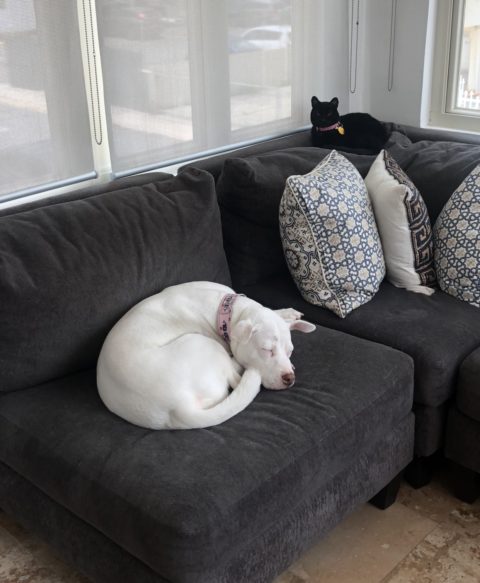Cues: Upgrading Your Dog’s Response
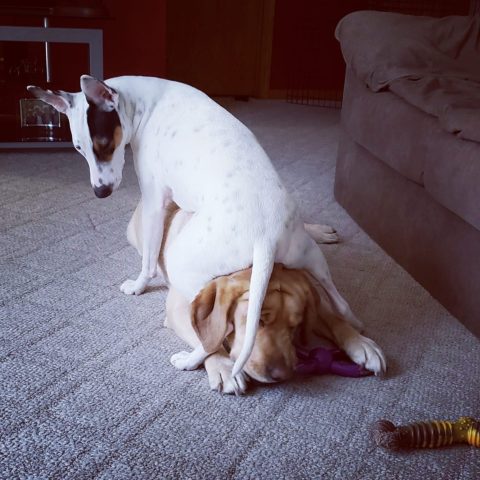
photo credit Ashley Szews
Repeatedly cueing the behavior when your dog does not respond does not improve the efficiency of cues.
“Come! Come! Come!” or the equivalent visual version of repeating the cue over and over actually serves to potentially weaken your cue and subsequently your dog’s reliable and rapid response.
If you cue a behavior and your dog does not react appropriately, do not cue it again. Instead, cue an easy alternative. For example, cue a behavior that your dog has a 99% chance of effectively performing—possibly a name recall, eye contact, collar grab, or a hand target. Then, stop your training session. Finish with this successful behavioral response and take a break while you consider what went amiss.
If your dog was highly motivated by the reinforcer you were offering, had sufficiently practiced at the level of difficulty where you were working, and understood the cue you were communicating there would be no reason that she would not successfully comply. For this reason if you are struggling with your dog’s response to a cue, you might want to dissect the problem.
The first step is to always rule out any possible medical reason for behavior. Be certain that your dog is not experiencing any medical issues that might prevent her from being able to respond to the cue.
Having then ruled out any possible medical difficulties your next avenue is to address the behavior. It’s likely that the cue response problem lies with one of the following issues.
-
-
-
-
- The reinforcer is not strong enough.
- The environment is too distracting.
- The dog does not understand the cue.
- A combination of the above scenarios.
-
-
-
Reinforcer
First, double check that the reinforcer that you have chosen is a “200” on a scale of 1 to 10 for your dog. In other words, does she really want to work for what you are offering? Your dog will demonstrate her preference via her response time and interest level. Think about how it might look different if you are offereing a piece of kibble vs. a piece of chicken.
Environment
Also, consider whether there might be environmental reinforcers that could simultaneously be competing at a stronger level. For example, in Blanca’s world chasing iguanas would trump cheese any day. Are there any other distractions going on in your training venue? Is this the first time working in this spot? Acknowledging the level of difficulty based on the distractions, which would include training in a novel environment, is a key part of training decisions.
Cues
Finally, think about your training plan. Have you sufficiently trained the cue for the behavior in the environment that you are asking for it to be performed? Did you build a strong foundation and a long reinforcement history with the cue? Did you start, first with shorter distances, lower distraction levels, and less duration? Did you then work towards increasingly more difficult versions and is your dog able to respond immediately and quickly to the cue each time? In other words is your cue under stimulus control?
Taking steps backwards and breaking down the over-all criteria for your behavior can enable you to gain gain traction and make progress. Split your criteria into small steps and celebrate (reinforce) the tiny approximations. 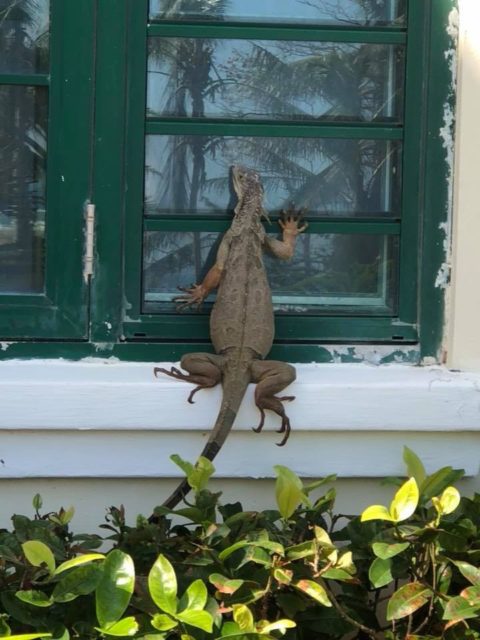
Let’s use a recall behavior as an example. Beginning right next to your dog is the key. Often working indoors where you can
control the environment and the level of distractions can help to get things started. Using higher level reinforcers as you increase your difficulty criteria is an important consideration. For instance, when taking the training “on the road” or upping the distance you are working at you want to use those top level reinforcer options.
Be sure that your cue is clear and consistent and confirm that you have an effective marker in place which you predictably pair with a reinforcer every time.
We are continuing to practice my dog Blanca’s recall and recently have begun working with more distance in the fenced tennis courts. However, we still have work to do should an iguana decide to appear ;)!

 Does your deaf dog
Does your deaf dog 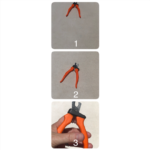
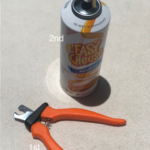

 Does your
Does your 